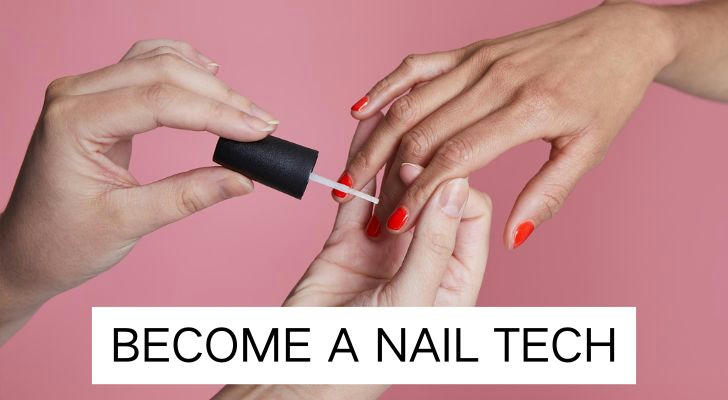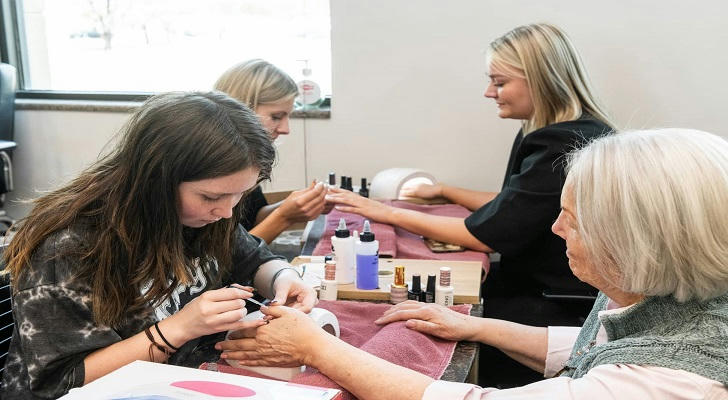How to Become a Licensed Nail Technician in the US
A nail technician license is required in most U.S. states for individuals who want to provide professional nail care services, including manicures, pedicures, and artificial nail applications. Becoming licensed involves a combination of education, practice, and state certification. While the exact steps can vary slightly depending on the state, the overall path is similar across the country.
This guide outlines the basic process and what aspiring nail technicians should know before starting their training.

What Is a Nail Technician?
A licensed nail technician is trained in the care, shaping, painting, and enhancement of fingernails and toenails. Common services include:
- Basic and spa manicures
- Pedicures
- Acrylic, gel, and dip powder enhancements
- Nail shaping and cuticle care
- Nail art and design
- Hand and foot massages
- Sanitation and infection control
Nail technicians work in various settings such as salons, spas, beauty bars, and mobile service businesses. Some also work in medical environments or offer specialized services for specific client needs.
Step 1: Understand State Licensing Requirements
Each state in the U.S. has its own Board of Cosmetology or equivalent licensing authority. These boards regulate the requirements for nail technician licensure, including training hours, curriculum content, exams, and license renewal.
Training hour examples by state:
- California: 400 hours
- New York: 250 hours
- Texas: 600 hours
- Florida: 240 hours
- Illinois: 350 hours
In addition to education and exams, some states may require a background check or age verification. It's important to confirm the current requirements directly through the relevant state agency before beginning any training program.
Step 2: Enroll in a State-Approved Nail Technician Program
The next step is to complete a state-approved nail technician program. These programs are typically offered at beauty schools, vocational institutes, and community colleges.
Core subjects often include:
- Nail anatomy and structure
- Nail diseases and disorders
- Client consultation techniques
- Safety, sanitation, and hygiene
- Manicuring and pedicuring procedures
- Artificial nail applications (gel, acrylic, dip)
- State laws and professional ethics
Most programs combine classroom instruction with supervised hands-on practice in a salon-like environment. Program duration depends on the required hours and class schedule, but most can be completed in a few months with consistent attendance.
Step 3: Pass the Required Licensing Exam
Once education is completed, aspiring nail technicians must pass a licensing exam to receive certification. The exam is typically administered by the state licensing board or through an approved testing provider.
The licensing exam usually includes:
- Written or theory section: Covers subjects such as nail anatomy, infection control, state laws, and proper procedures.
- Practical section: Requires candidates to demonstrate hands-on skills like sanitation, basic manicures, polish application, and enhancement techniques.
Candidates must meet the passing score set by the state to move forward. Some states may allow one or more retakes if the exam is not passed on the first attempt.
Step 4: Apply for the License
After passing the exam, candidates must complete the formal application process to obtain a state license. This typically includes:
- Submitting proof of completed education
- Providing exam results
- Filling out an official application form
- Paying the state’s required application and licensing fees
- Submitting identification or age verification, if needed
Once approved, the license is issued either by mail or electronically, depending on the state.
Step 5: Keep the License Active and Compliant
Most states require nail technicians to renew their licenses regularly. Renewal periods vary, but typically occur every one or two years.
Some states also require continuing education, often focused on updated sanitation laws, health and safety, or new techniques.
Failure to renew a license on time may lead to late fees or suspension. Inactive or expired licenses may require reapplication or additional training hours to reactivate, depending on the rules in that jurisdiction.
Optional: Additional Certifications and Skills
While a basic license allows a technician to work legally, additional certifications can help expand services and increase client trust.
Popular areas for extra training include:
- Electric file safety and use
- Advanced nail art and design
- Builder gel techniques
- Soft gel extension systems
- Sanitation for medical or high-risk clients
- Nail repair and restoration methods
Many technicians also build digital portfolios and learn client communication or small business management skills to improve their success in salons or as independent service providers.

Typical Work Environments for Nail Technicians
Licensed nail technicians often work in:
- Nail salons and beauty bars
- Full-service hair salons with nail stations
- Spas and wellness centers
- Hotels and cruise ships
- Medical clinics with cosmetic services
- Mobile or home-based studios
Some professionals choose freelance work or private studio setups for more flexible schedules, while others prefer busy salons with steady client traffic.
Career Outlook
Nail technology remains a growing part of the beauty industry. Demand is supported by:
- A rise in consumer interest in wellness and self-care
- Ongoing nail trends fueled by fashion and social media
- Expanding services in resort and hospitality locations
- Clients seeking personalized and sanitary nail care options
According to federal labor data, the job outlook for manicurists and pedicurists is expected to grow faster than average over the next decade.
Technicians who keep up with trends, prioritize hygiene, and offer in-demand services tend to have stronger long-term prospects.
Summary of Key Steps
- Research your state’s licensing requirements
- Complete a board-approved nail technician training program
- Pass the written and practical exams
- Submit the licensing application and required documentation
- Renew and maintain the license as required
Conclusion
Becoming a licensed nail technician in the U.S. requires formal training, practical skills, and an understanding of hygiene and regulations. For those interested in a hands-on and creative profession, nail technology offers a clear path to a state-recognized career. Following each step with care ensures compliance, builds confidence, and lays a strong foundation for working in salons, spas, or private setups across the country.

References:
- U.S. Bureau of Labor Statistics – Nail Technician Occupational Outlook
- National Interstate Council of State Boards of Cosmetology – Testing Standards
- State Board of Cosmetology Regulations (California, Texas, Florida, New York, Illinois)
- Professional Beauty Association – Industry Training Guidelines
